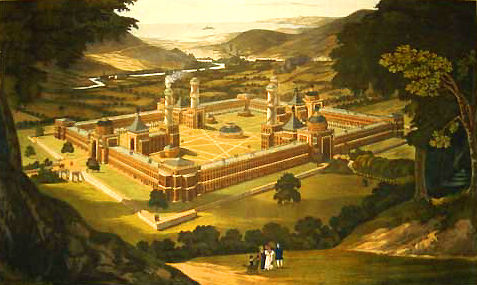
While Eric Gordon’s reflections on religion and socialism in an earlier installment of the People’s World’s Series on Socialism are perceptive and nuanced, I have to take issue with his bold assertion: “There will never be a socialist or a communist utopia.” My late grandfather Carl Hertlein observed: “Eternity is a long time.”
I was reminded of Oscar Wilde’s defense in his memorable essay, The Soul of Man under Socialism: “A map of the world that does not include Utopia is not worth even glancing at, for it leaves out the one country at which Humanity is always landing. And when Humanity lands there, it looks out, and, seeing a better country, sets sail. Progress is the realization of Utopias.”
In this context, I remember asking the late novelist Truman Nelson, author of Passion by the Brook, a fictional account of Brook Farm, what he thought of Frederick Engels’ book Socialism: Utopian and Scientific. He responded: “Oh, that badly misled me,” referring to its treatment of utopias as but an outworn passing phase. “If we don’t start somewhere, how will we know where we are going?”
One of the classic and, in my view, best introductions to economics is Robert Heilbroner’s book, The Worldly Philosophers. In addition to leading figures like Adam Smith and Marx, he includes a chapter on the Utopian Socialists, particularly Robert Owen, founder of New Lanark in Scotland and New Harmony on the east bank of the Wabash River in southwest Indiana.
But strangely, he omits to say that New Harmony still exists, not as a formal utopia, but as a kind of living heritage community and cultural center. Many of the original buildings remain, as does the remarkable Workingmen’s Institute, dating back to 1838. The donor of the building, long after the utopia itself dissolved, was the local physician, who arrived there as an orphan. He was so devoted to the community that he left funds for the building, which houses a museum, art gallery, and archive.
Visitors to present-day New Harmony are often impressed by the calm, tranquil beauty of the place – features it shares with the remaining Shaker Villages, the Amanas in east central Iowa, Zoar in Ohio, and so forth. For all their eccentricities, these communal experiments were usually based on the positive elements of the designed environment, paralleled by attempts to foster sympathetic relationships in their societies.
Some, of course, were patriarchal, and others were almost benevolent (and not so benevolent) dictatorships. The range of political and social practices and concepts makes it difficult if not impossible to generalize. But anyone who visits them today will come away with an experience of peace that is only rarely found in the great metropolises of the Empire.
The Shaker communities welcomed many people rejected by the larger society. Abused women and children found sanctuary among them, while angry men who considered them as his property were repelled at their doors. Furthermore, Shakers provided a home for children who were mentally or physically disabled. With such practices, they should be considered social pioneers, well in advance of our present state welfare systems.
John Humphrey Noyes, founder of the Oneida community, wrote a classic book called the History of American Socialisms (note the plural: utopian experiments were widely diverse). In it, he surveyed their experiences and went on the record somewhat sympathetically in favor of a defense of religion not dissimilar to Eric Gordon’s. Noyes observed that the religiously-based communities tended to last longer than the secular ones, having more of a sense of common values, however peculiar. This presents us with a perennial challenge: while religion can provide a sort of social adhesive for its proponents, the more secular activists are “all over the place.” The Left has been notoriously divided, not to say outright quarrelsome. How to overcome this kind of fracturing remains a persistent difficulty.
Another instance of this observation is provided by Robert Owen’s son Robert Dale Owen, who after the formal failure of New Harmony as a communal experiment, noted that upon its founding, the town was flooded with people who just believed that everything would be freely provided, without the necessity of labor or working collectively. He further granted that religious communities often went through an extended period of education and preparation, before their actual founding.
Mention must be made of the wonderful music that came out of these American utopian communities. The Shakers were famous for their energetic fusion of hymns and dance. The Moravians in Pennsylvania and North Carolina produced original compositions, both instrumental (especially for brass instruments), and choral. Numerous recordings from both communities have been produced and are still available.
Among our working class music, “The Big Rock Candy Mountain” expresses the common people’s longing for peace and plenty, with profound roots in old legends of the Age of Gold, and the Land of Cockaigne from as far back as the Middle Ages, with its vision of food and drink for all. The English communist historian A. L. Morton documented this rich background in his classic book, The English Utopia.
So, while I can agree with Engels’ insistence that utopian communities by themselves could not overcome the power of capitalism, we do well to study and learn from their positive achievements, as well as their failures.
Photo: Wikimedia (CC)










